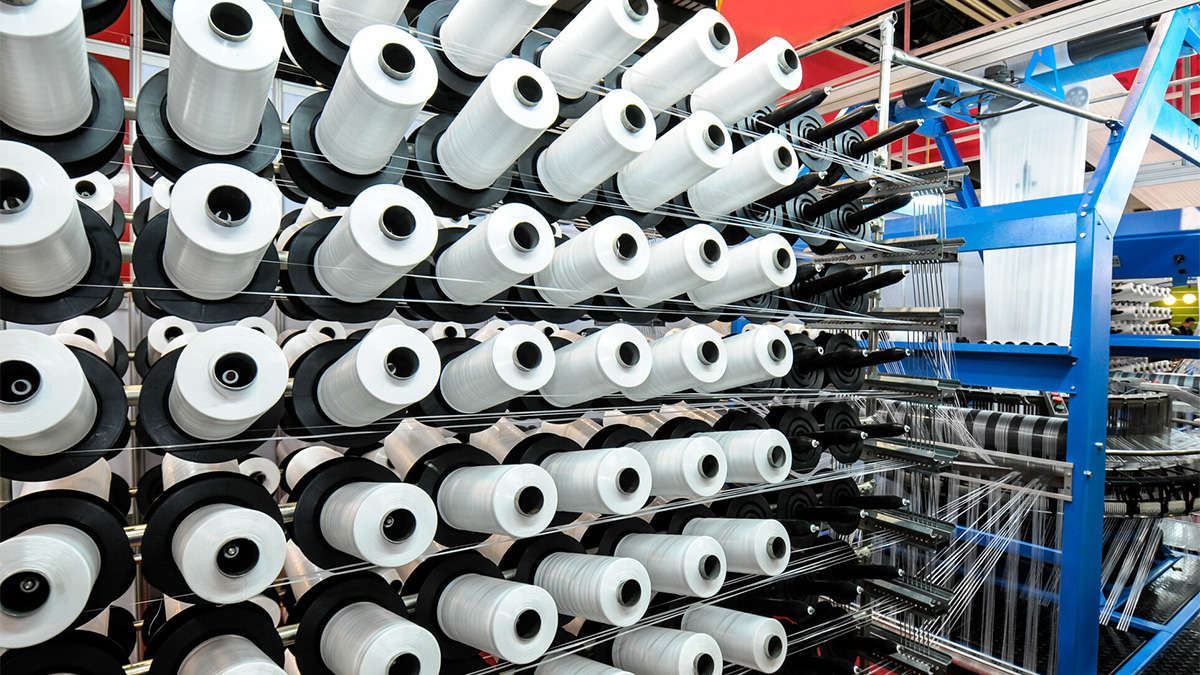A textile machine is any one of the machines used for taking natural fibers or chemical fibers and making them into textiles. Different fibers like cotton, hemp, hair, etc., have different kinds of processing required to change them into textiles, therefore a variety of different “textile machines” are used to perform these processes.
The Textile Industry
We all can appreciate the textile industry as it is responsible for many products we use in our daily lives. The industry makes our clothes, curtains, some types of flooring, and even furniture. Because it has such an impact on our lives, the textile industry is large and its products are in high demand. But how does an industry produce all of the products we want and need? Well, there are specialized machines that make the items quickly and efficiently. In this article, we will learn about some of the commonly required machinery in the textile industry.
Basic Background Information
Before we dive into the types of machinery, let's break down the industry a bit first. Textile is the word used to describe fabric that has been woven. Thus, the textile industry is the industry that completes that process. There are many different types of fabrics including those made with natural fibers like cotton and flax, and those made with synthetic fibers, like polyester and spandex. Whether natural or synthetic, the raw materials must go through several processes that use textile machinery to produce a finished product.
Textile machine is a general name for all kinds of mechanical equipment which are required for making natural fiber or chemical fiber into textile through processing. Different fibers like cotton, hemp, hair have different required processing to change them into textile. Some are totally different, so they are needed a variety of machines. (repeated from above)
Types of Textile Machines
Textiles fabrics or cloth are made by using a variety of methods including braiding, felting, knitting, netting, and weaving. Textile machines are also involved in processes such as dyeing, printing, twisting, fiber processing, fabric handling, yarn handling, sewing, weaving, and knitting.
Another important textile machine is the dyeing machine. One type of dyeing machine is then agitation tank. It is a large insulated vat with a mixer, an air pump, and a heating coil. Another type of dye vat assembly is a dye beck; a machine that uses a continuous process to pass long pieces of fabric cloth through the vat. Other textile machines used in dyeing include the rapid oscillating dyeing machine, the dyeing oven, computerized high temp jet dyeing machines, and rope dyeing machines. For drying, there are steam dryers, drum dryers, conveyor dryers, and tumble dryers. For printing, the types of textile machines that are used include rotary screen-printing machines, and heat transfer printers.
Weaving is the process by which thread is interlaced to make cloth. The two directions of thread are known as the warp and the weft. Weaving is done on textile machines referred to as looms. These include air-jet looms and water-jet looms, in which the force of the air or the water is used to insert the weft. Specialized looms include circular weaving looms and narrow fabric looms.
Knitting is another method, besides weaving, of making strands into cloth. In textile manufacturing, knitting machines of various kinds are used to make knitted, as opposed to woven, fabrics. These include the single Jersey knit machine, the spandex rib knit machine, and tricot knitters. Also used are flat bed knitters and circular knitters of various diameters, for example, 3.5 inches (8.89 cm) and 6 inches (15.24 cm).
There are different types of textile machines which can create special fabric effects. For example, there are special machines used for embossing, mercerizing, sanding, or knit napping. For preparing fabric, there are machines that bleach, shrink, and wash fabric. For yarn, there are winders, yarn conditioners, and skein expanders.
Since so many things we need and use every day are made from fabric, it is not surprising that there are many machines responsible for creating all of those products. Textile machines are used to take raw material fibers from their original state all the way to a finished end product.







.png)






